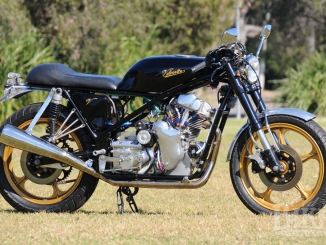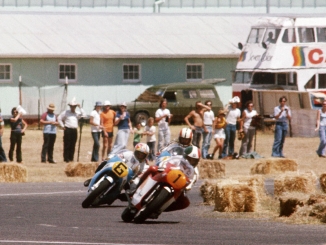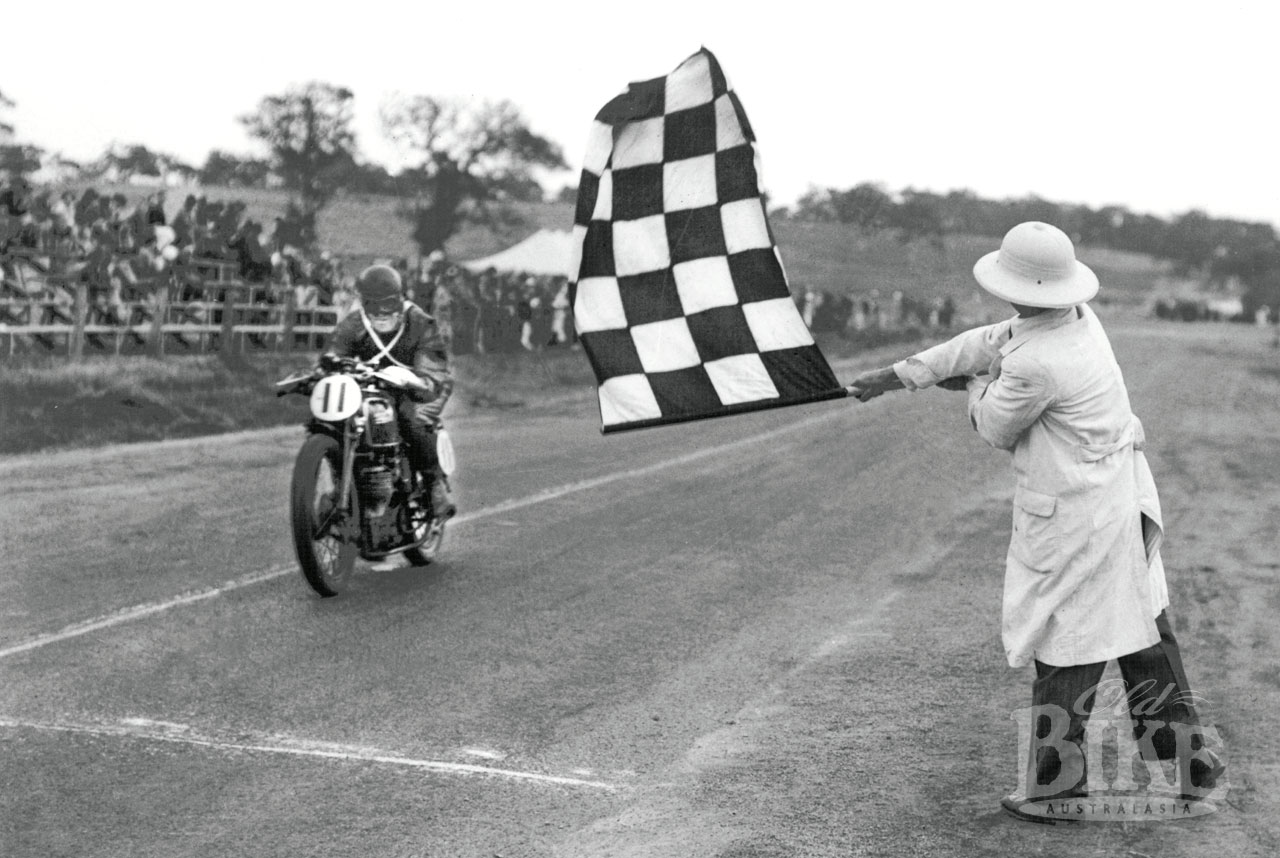
From our Old Bike Archives – Issue 102 – first published in 2022.
Story: Jim Scaysbrook • Photos: Dennis Quinlan, Alan Wallis, Keith Millich, George Bolton, Brian Forth.
Imagine if Marc Marquez, Valentino Rossi or Fabio Quartararo decided upon a sabbatical in Australia during the break of the MotoGP season. Unlikely. Impossible. But it did happen that the world’s number one road racer packed his bags, and with his attractive Canadian-born wife Mildred, embarked upon a three-month sojourn Down Under in 1936.
Stanley Woods was a superstar beyond all others of his era. Able to command the best seat in any team, and there were many; Norton, Cotton, Velocette, DKW, Husqvarna and Moto Guzzi, all at top dollar. Controversially, he had quit Norton in 1933 when the management claimed that Woods himself had become bigger than the Norton brand, which was unacceptable to them.
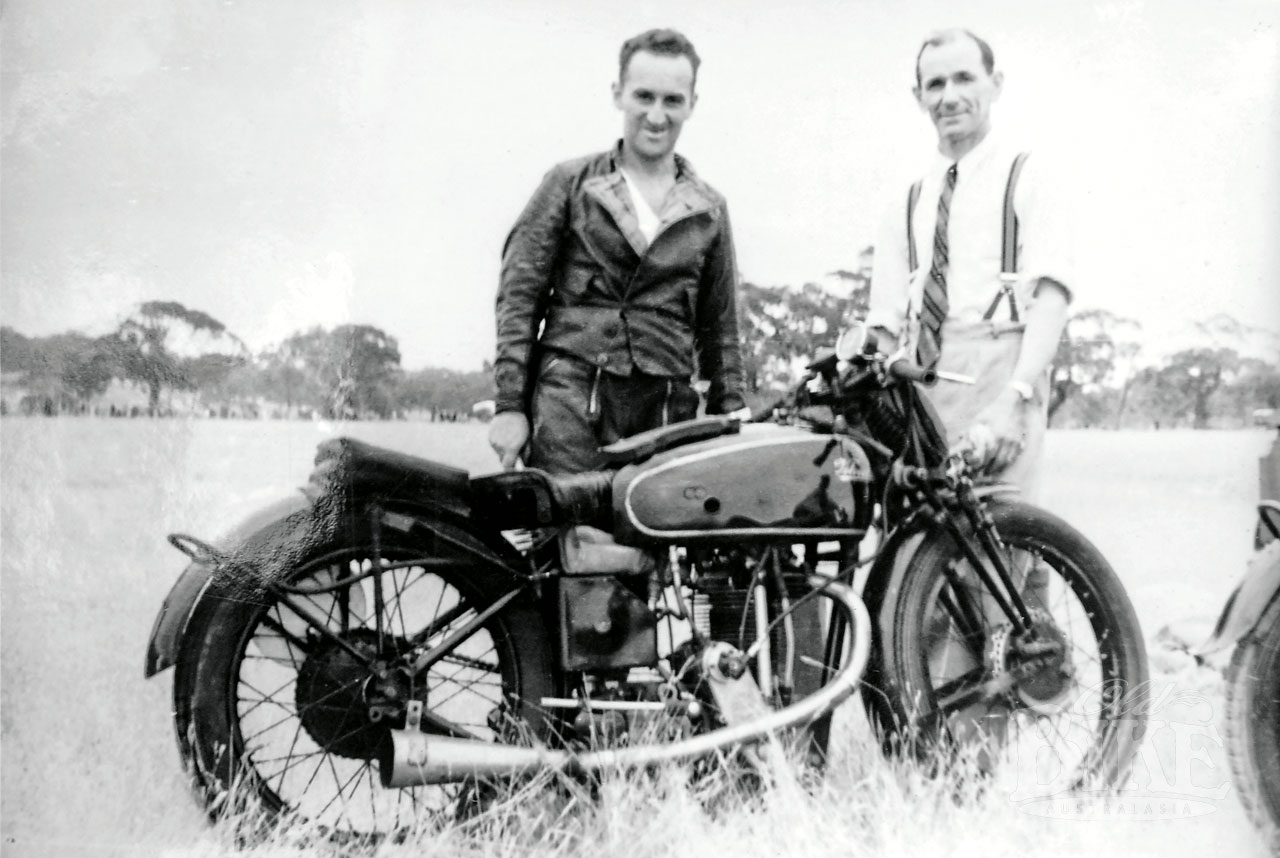
By the end of 1936, Stanley needed a break. Despite another successful year, where he narrowly failed to add to his record eight Isle of Man TT wins when his 500 Velocette developed a misfire on the last lap, he was still suffering from the lingering effects of a major accident at Monza in September when practicing for the Italian Grand Prix on the 500cc twin cylinder Moto Guzzi. When a plan was hatched to bring him to Australia on a ‘racing holiday’, he jumped at it. A few months away from the European winter might be just what the doctor ordered. Stanley and Mildred sailed out of England on 4th November aboard an Aberdeen and Commonwealth Line ship via Malta, Port Said and Colombo, with two Velocettes in the hold. The trip was conceived by a trio of Velocette agents in Australia; Lou Borgelt in Adelaide, Percy Williams in Sydney and Les Parry in Melbourne, and Velocette keenly supported the idea.
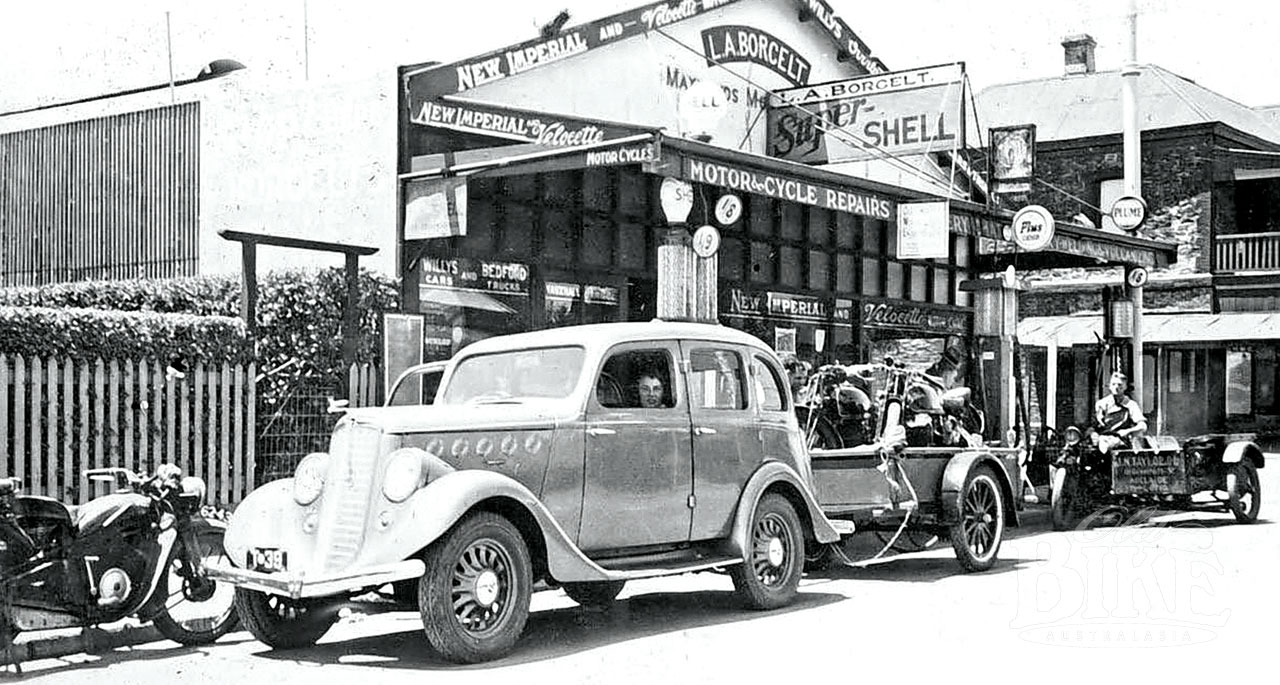
The pair arrived in Fremantle on 4th December and five days later were in Adelaide along with the Velocettes; both rigid frame models, a 350 and a 500. The couple was honoured at a Civic reception attended by the Lord Mayor, Mr Cain at the Adelaide Town Hall, and extensively covered by local media. Stanley surprised everyone when he said that he had been on the verge of migrating to Australia in 1922 to become a farmer, before changing his mind to pursue a career as a motorcycle racer.
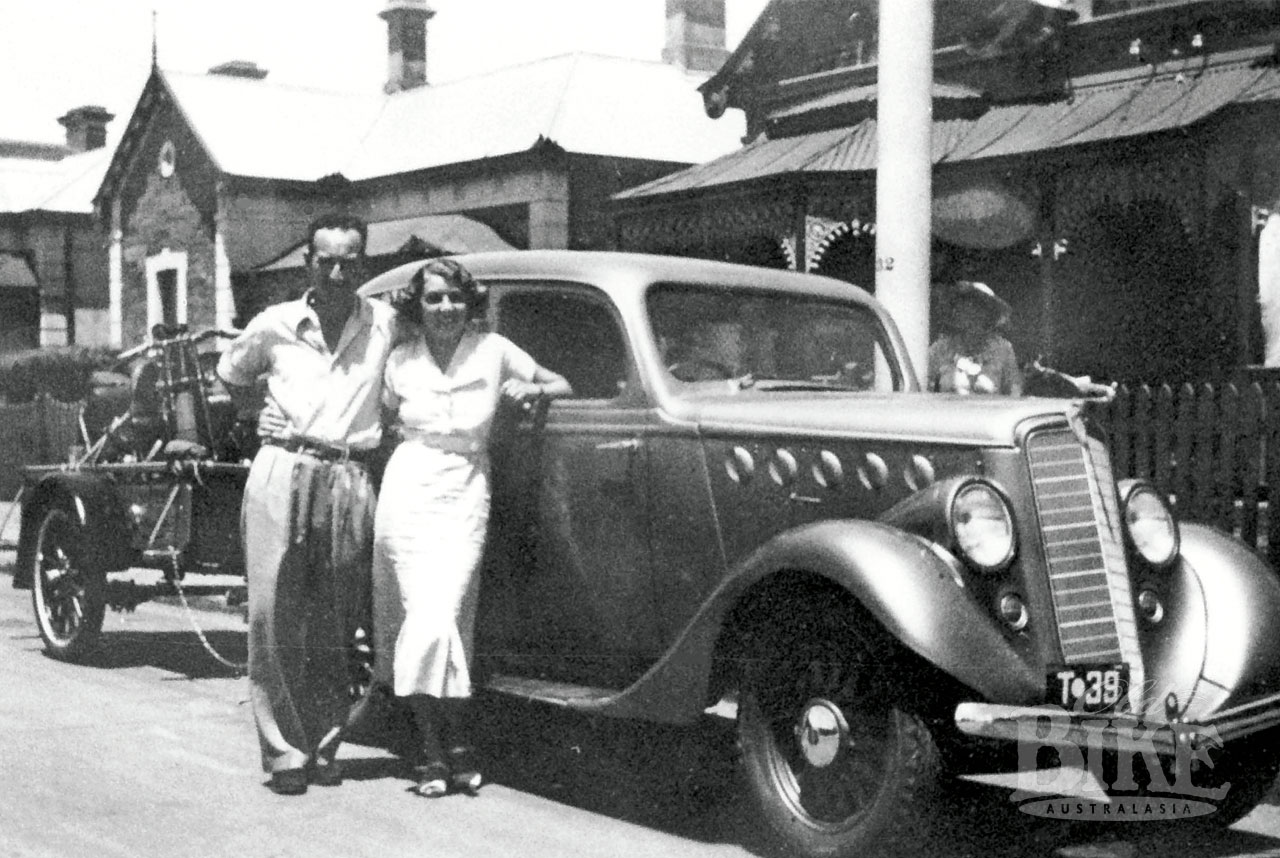
The first of Stanley’s two scheduled racing engagements was the South Australian Centenary TT, held from December 26th –29th at Victor Harbor, 80km from Adelaide on the Fleurieu Peninsula. With a car and trailer provided by Borgelt, Stanley and Mildred drove to Victor Harbor in time for the first practice session on 19th December. The circuit was mostly bitumen sealed, with the remainder reconstructed with blue metal and gravel treated with calcium chloride to reduce dust, running clockwise from just outside Victor Harbor itself to Port Elliot, a distance officially quoted as 7.8 miles (12.5km). Two long straights meant an emphasis on horsepower over handling. Road racing had been banned in South Australia since 1925, but after much lobbying, the new Motor Traffic Act was passed into law in 1936, making it possible to close public roads for racing under special circumstances.
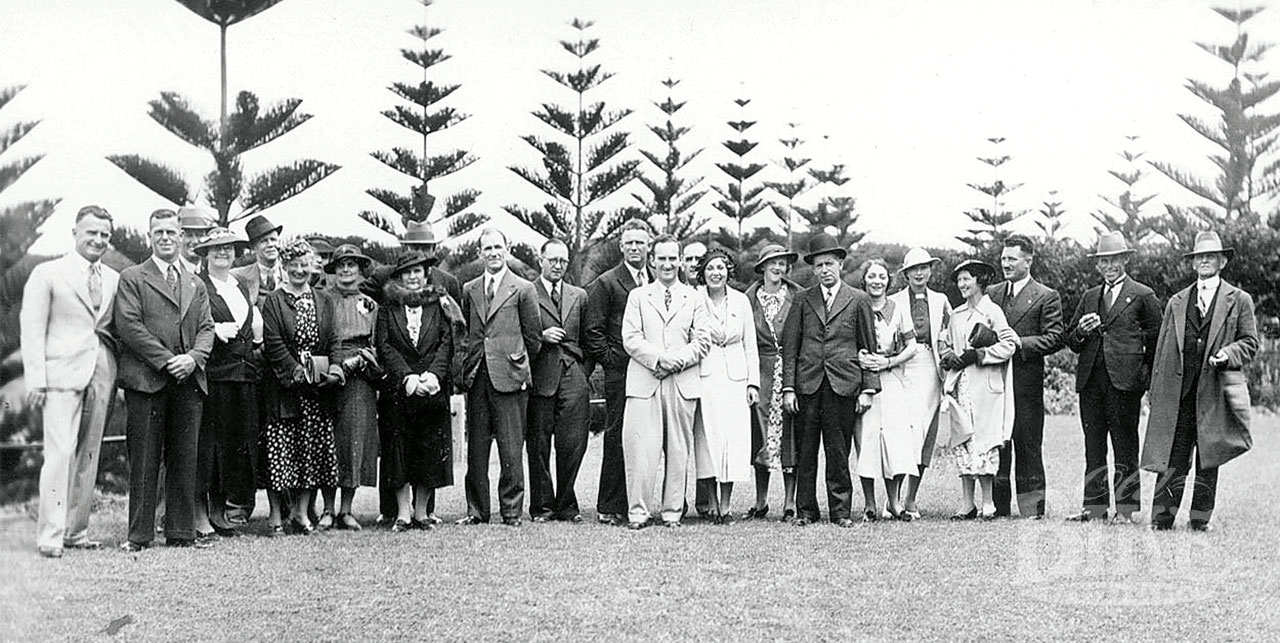
Starting positions were to be drawn by ballot, but Woods suggested that in the interests of safety, and with a wide discrepancy in lap times, starting positions should be allocated on the basis of practice times. Not surprisingly, Woods was comfortably fastest with a lap of 5 minutes 37 seconds, averaging 83mph (133.6 km/h) despite only doing a handful of laps in order to conserve his engines. Local Lloyd Potts was second fastest, 20 seconds slower than Woods, while one of the favourites, Victorian Jim Pringle, was twice stung on the chest when he encountered a swarm of bees. Two events were held on Boxing Day; the Sidecar TT over seven laps or 50 miles, won by local Ron Badger on an Ariel Square Four, and the Australian Grand Prix for cars over 250 miles.
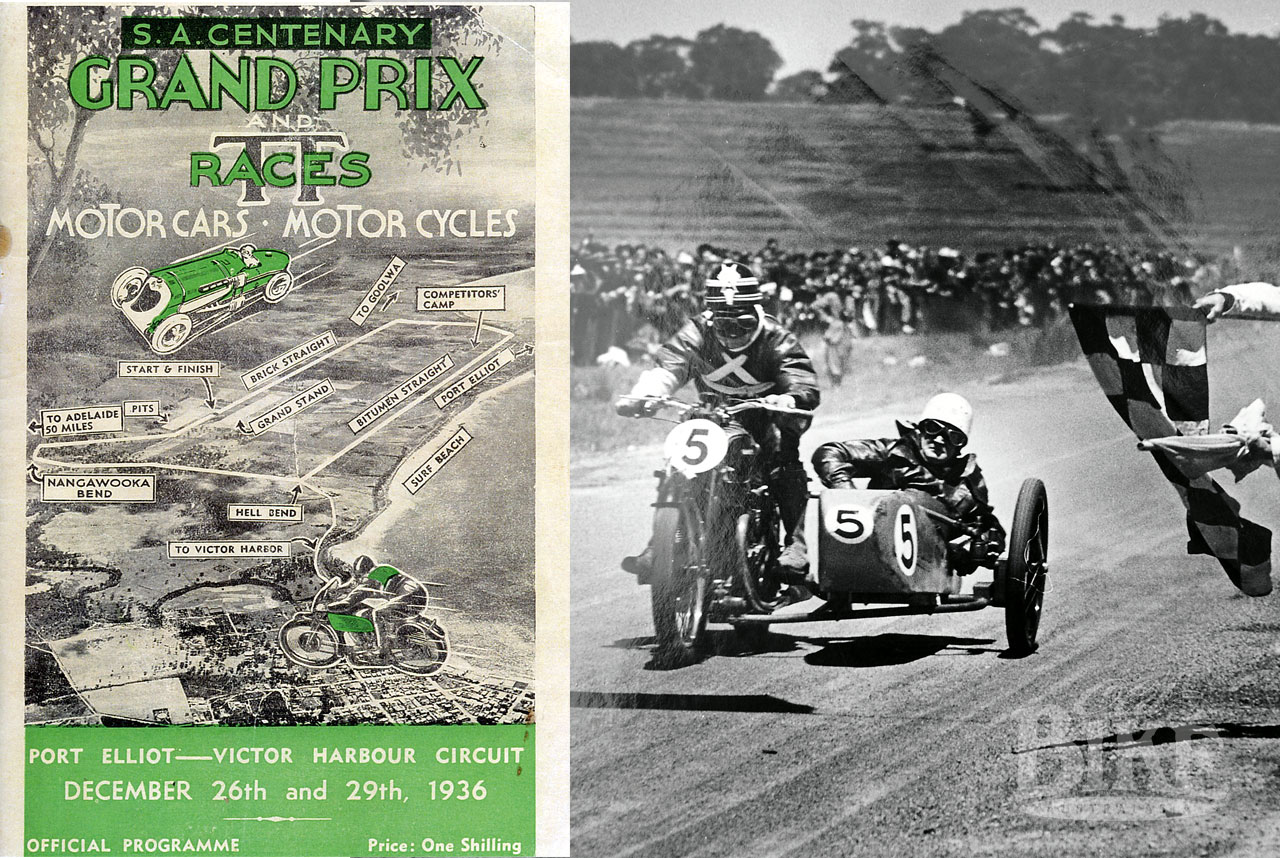
After a three-day break, racing resumed on 29th December with the combined Lightweight 250cc and Junior 350cc TT over 75 miles starting at 10.45 am. In the Junior race, Woods led the 14 starters away and quickly settled into his stride, completing the first lap comfortably ahead of Pringle, Don Bain and Jack Brown. Woods came in to refuel with two laps to run, taking 12 seconds and re-joined without losing the lead over Bain who had passed Pringle, who retired soon after. Brown and George Wade fought out third, until Bain ran wide at Hell Corner and clipped the banking. On the last lap Brown fell at the Hairpin but was able to get to his feet and stay in third behind Woods and Bain. With half a lap in hand over Bain, Woods took the chequered flag to a standing ovation.
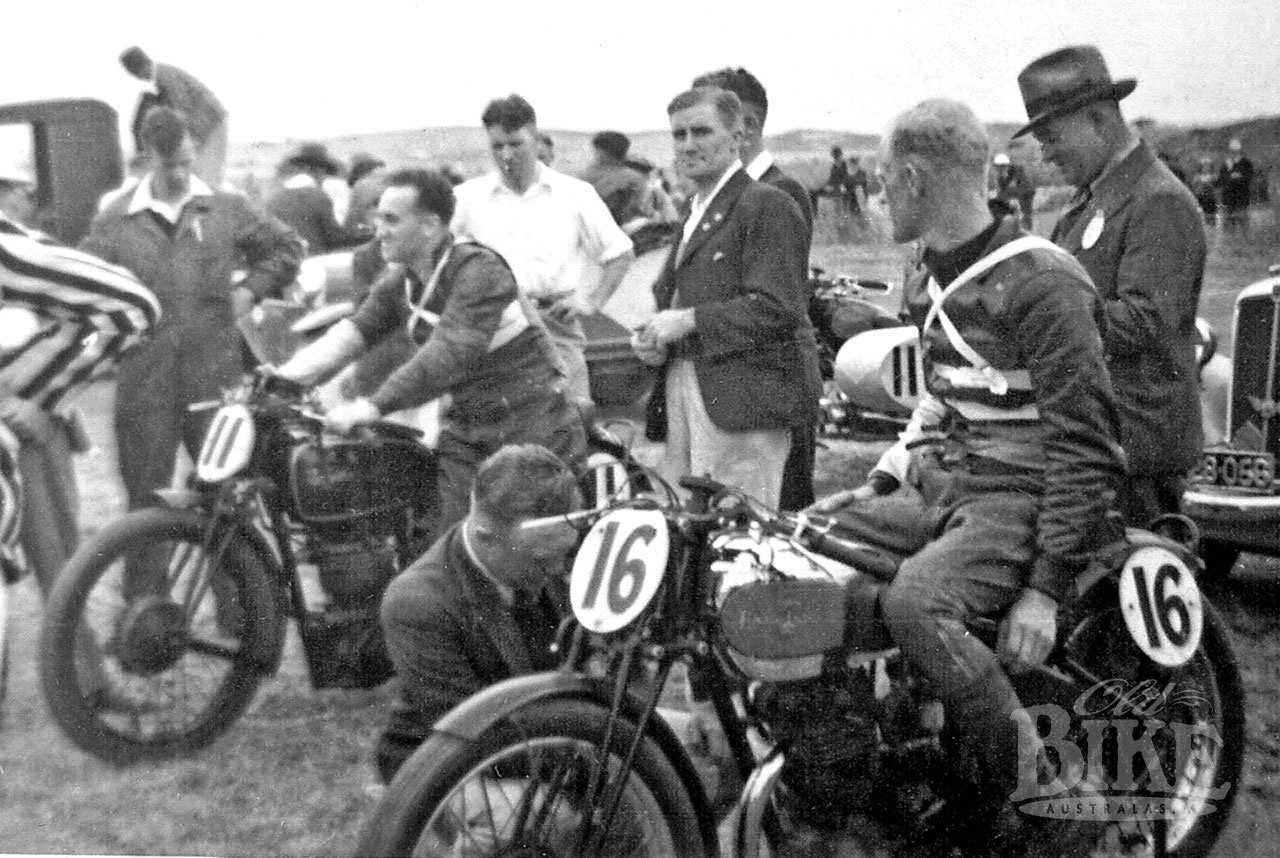
While the Senior TT contestants awaited their event, a 50-mile car race kept the crowd amused, but badly cut up the circuit at the Hairpin and at the left hand corner onto the Brick Kiln Straight. Furious road works had the track cleaned up in time for 21 starters (from an original entry of 46) to take their place on the grid for the 100-mile Senior TT. The crowd roared as locals Frank Tuck and Laurie Boulter got the jump, pursued up the hill by Victorian Alf Kerry and Don Bain. Woods adopted a casual approach, but by the time the first lap was completed he led by half a mile, with Foster, Pringle and Hector giving chase. Woods pitted for fuel after seven laps, but the Irishman was in trouble. The clutch lever of his 500 Velocette had come loose, and in an attempt to tighten it, a mechanic snapped the lever clean off. It took several attempts to push start the clutch-less Velo, losing Woods several minutes. By now Clem Foster held a clear lead and was steaming along, while Woods began a frantic chase through the field, smashing the lap record repeatedly. With six laps to run Foster led Bain by 100 yards, with Pringle third, one mile back, but Woods soon surged into third followed by George Hannaford. Pressing on relentlessly, Woods lapped at 87 mph on the 11th lap and 88mph on 12th. To the delight of the crowd, South Australian favourite Foster won by three-quarters of a mile from Bain with Woods closing rapidly in third. Foster averaged an impressive 83 mph for the race. Woods’ fastest lap of 5 minutes 18 seconds represented 88 mph, while the fastest lap in the car Grand Prix went to Tom Peters’ Bugatti 37A at 5 minutes 47 seconds, or 81 mph.
As an aside to the actual race results, Woods established two Australian Speed Records during his winning ride in the 350 race – for Class B solos up to 350cc. His records were for 50 Mile Standing Start and 50 Mile Flying Start, both at 76.37 mph, and both still stand today. Clem Foster did likewise in the 500 race, establishing new marks for the 100 mile Standing and Flying Start at 76.77 mph.
At the social evening following the races, Woods said, “I thank you for the almost embarrassing attention that has been given to me and my wife in South Australia. The organisation of your first big road races at Victor Harbor made it a pleasure to take part in them. There was a minimum of red tape, and I must congratulate Mr. Wal. Murphy on his work. The regulations were interpreted in a generous manner, and if similar races are run again, I think you will get even more support. Although I cannot say that I will return to Australia, I would be sad if I thought I was leaving these shores never to return. I hope to come back one day.”
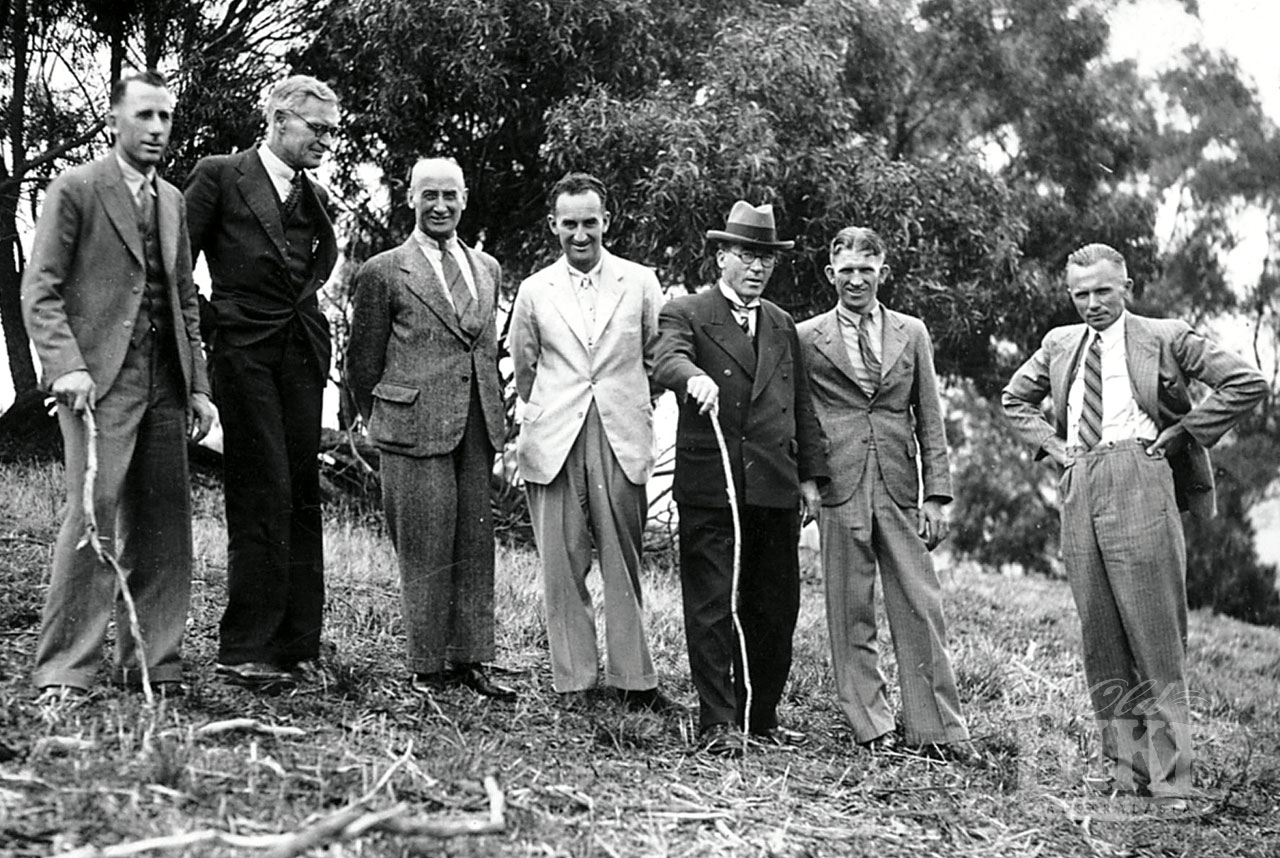
On 13th January, 1937, Stanley was flown to Sydney by Perc Williams, and addressed a packed gathering in the P & R Williams showroom in Wentworth Avenue. The following day he was taken to Bathurst by the Auto Cycle Union of NSW to inspect progress on the new circuit at Mount Panorama which was under construction.
After a week’s sightseeing back in Adelaide, Stanley and Mildred left South Australia in company with Les Parry, driving overland to Victoria where Woods was to compete in the Australian TT at Phillip Island on 1st February, 1937. It was a leisurely trip, with the group stopping at numerous towns where the local motorcycle fraternity turned out in droves to catch a glimpse of the world’s top rider. The Phillip Island circuit, a rectangle of rutted and completely unsealed roads covered in loose stones, was in even worse condition than usual for the running of what was supposed to be Australia’s premier title.

During practice, Woods’ 500 engine swallowed a stone and was unable to be repaired for the races. This meant using the 350 for both Junior and Senior TT events. On race day, 31st January, a crowd officially stated at 51,000 crammed into every vantage point around the lap, despite rain that fell intermittently throughout the day. The track was wet for the start of the Junior TT but it made little difference to Woods, who led from the start. Pringle gave chase behind until the greasy surface caught him out and he fell at Hell Corner on the third lap. Remounting, Pringle forced his way back to second place as Woods won at a canter.
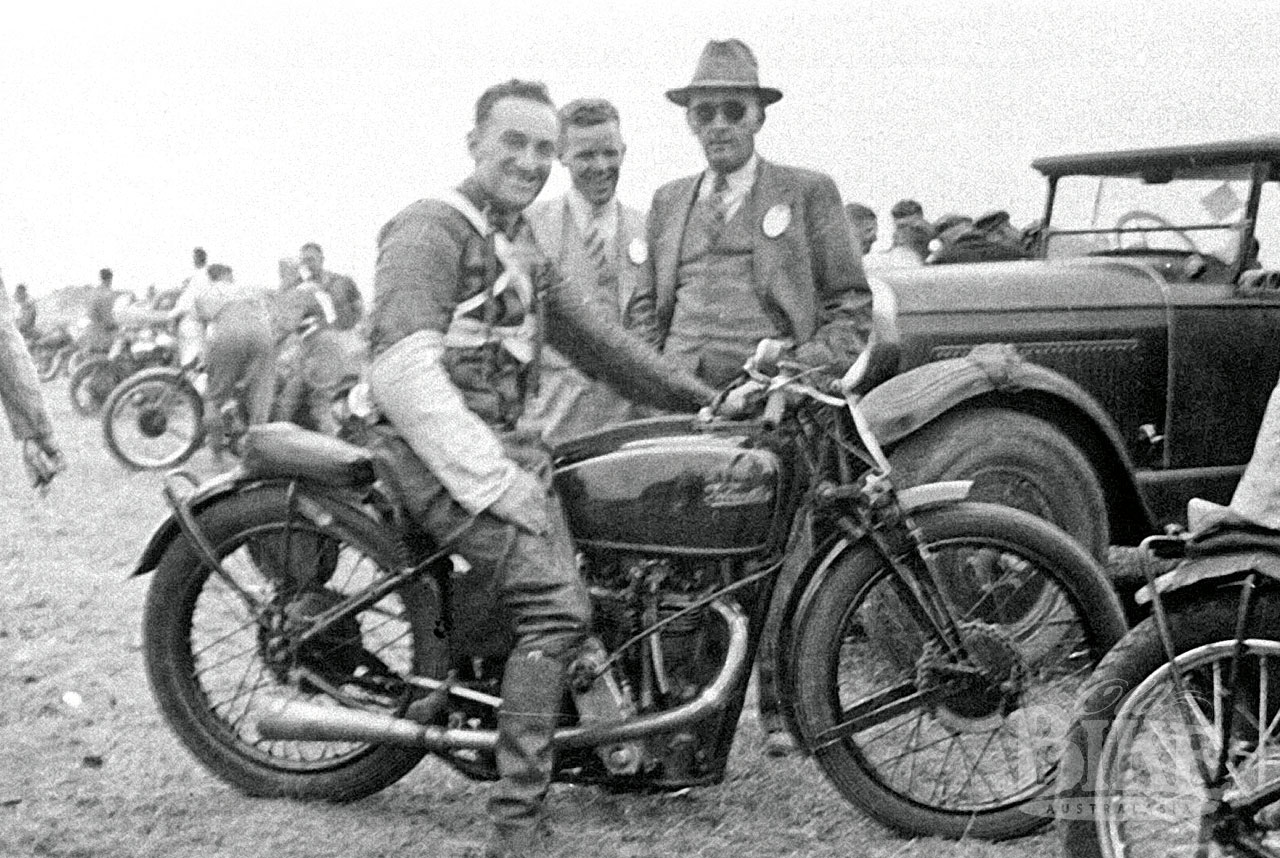


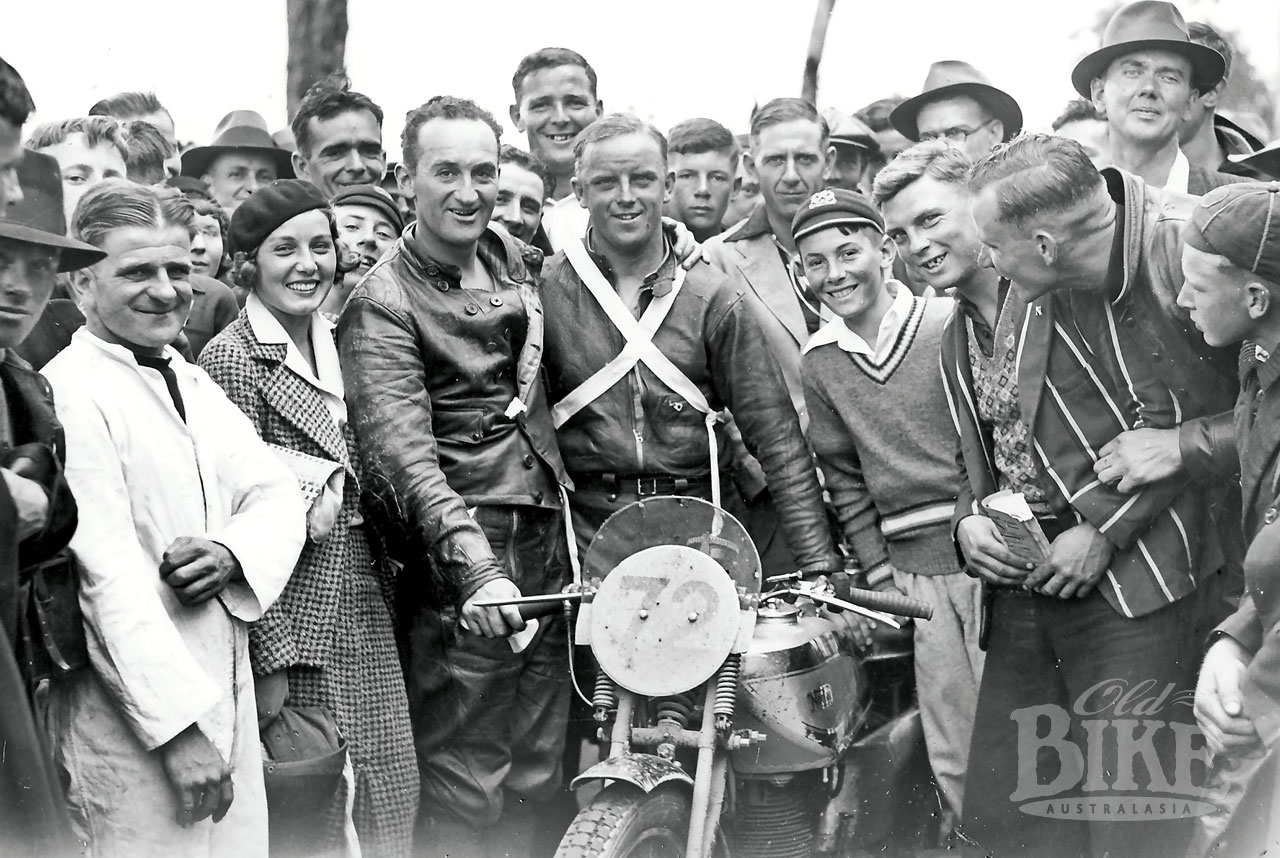
For the Senior TT, which was held on Monday 1st February, Woods was forced to start on the 350 Velocette, and on such a fast track – basically four long straights joined by right angle corners – he stood little chance. As expected, Pringle and Clem Foster, both on 500 Nortons, disappeared into the distance, but Woods brought his Velocette home in third place, despite dropping the bike while refuelling in the pits during the race. In spite of the conditions, Pringle again hoisted the race average to 84.97 mph (136.7 km/h).
During his time in Australia, Stanley had endeared himself to all who met him. The press labelled him “The smiling star”, and it is rare to find a photo where he is not wearing his trademark grin.

Stanley and Mildred sailed for England on 15th February, while the two Velocettes remained here. Back in Britain, Stanley took up where he had left off, adding two more TT wins to take his total to ten before WW2 began. His record of TT wins was to stand until 1967 when it was eclipsed by Mike Hailwood. In the ‘fifties, Stanley became the Irish importer for Moto Guzzi, and the company even invited him to test ride their fabulous 500 V8 at Monza in 1956. As late as 1983, he was still doing parade laps at the TT and Manx Grand Prix. Stanley Woods died peacefully on 28th July, 1993, aged 89.

